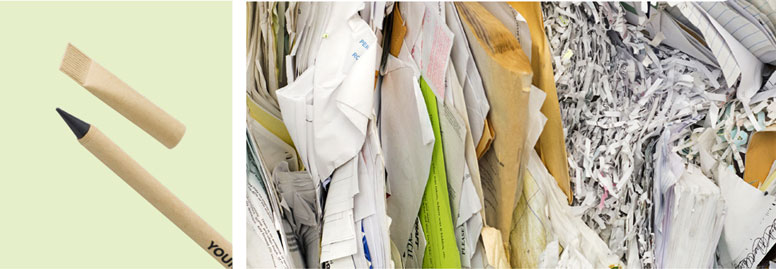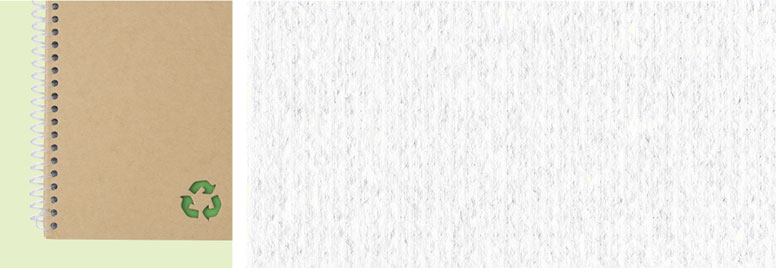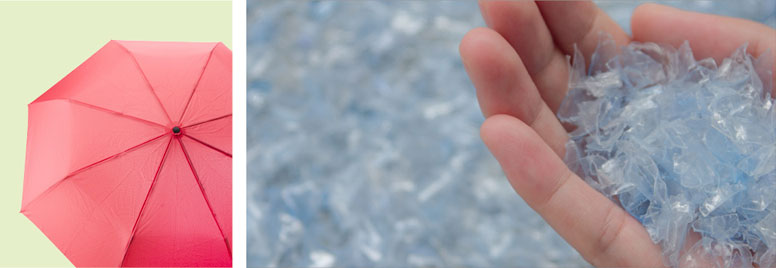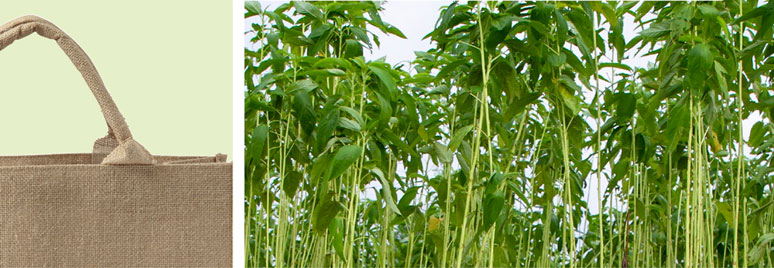Materials

Wood
Wood is a renewable resource. It is one of the most environmentally friendly materials. While the trees grow they absorb carbon dioxide and produce oxygen. Pine is the most sustainable as it is a fast growing tree. Wood is durable and gives the product a natural look.

Recycled paper
The production of paper requires a lot of water, which is considered a strain on the environment. Paper products should not go to waste but be recycled instead, which saves on energy and water consumption, and reduces waste.

Bamboo and bamboo fibre
Bamboo is a type of wood that is especially eco-friendly since it is a natural resource that renews quickly. Bamboo regrows extremely fast, is naturally pest resistant (no pesticides needed), and requires less water to grow than other plants. Bamboo fibre is a versatile material suitable for making both drinking cups and fabrics and is quickly biodegradable.

Stone paper
Stone paper is a new alternative to paper made from wood pulp. It is by definition not real paper, but a paper- like material made from calcium carbonate and polyethylene, which makes it water and tear resistant as added bonuses. The production of stone paper uses no water, unlike the copious amounts of water used for making paper from wood pulp, which is why stone paper is a more ecological alternative.

Wheat straw
Wheat straw is made of the leftover stalks after the wheat grains are harvested. When treated as waste, the stalks are burned, which leads to air pollution. When reclaimed, the stalks are an environmentally friendly material as they come from an extremely efficient, renewable resource in the food chain. Mixing wheat straw with plastic creates a sturdy material that requires far less plastic to make.

PLA
PLA is short for Polylactic Acid, a type of polyester, which doesn’t sound very “green”. But PLA is made from renewable resources like corn starch and sugar cane and it is a quickly biodegradable material

Cork
Cork is harvested only from the bark of the cork tree, meaning that the tree itself is not felled for the production of cork products. The tree simply regrows its bark, making cork a material from a highly renewable resource. Cork is both recyclable and biodegradable, meaning there is no polluting waste.

RPET
Recycled PET, or RPET, saves on the use of fossil energy. Production of RPET emits 70% less carbon dioxide and uses 90% less water than polyester. Instead of polluting the oceans, millions of throwaway PET bottles are recycled into new products.

Jute
The outer stem and skin of the jute plant are used to make jute: a hard-wearing material that is recyclable, biodegradable, and compostable. The jute plant is ready for harvest in as little as 4 to 6 months and has a high crop yield, making it a very efficient resource. It requires no pesticides or fertilization and even enhances soil fertility for future crops.

Linen
Linen is made from flax plant fibres. The flax plant requires little water to grow; only rainwater, no additional irrigation. It takes little energy to process flax and the entire plant is used, leaving no waste. Linen is strong, so it is long-lasting, but the product is also both entirely biodegradable and recyclable.

Cotton
Cotton is a natural and sustainable resource. After harvesting, most of the cotton plant is used, not just for the production of cotton, so there is little waste. On top of that, products made of cotton are biodegradable.

Other recycled materials
We are constantly seeking new products that incorporate various sustainable materials. Recycled aluminum is an example of this. Its production requires significantly less energy than making new aluminum and minimise waste.






